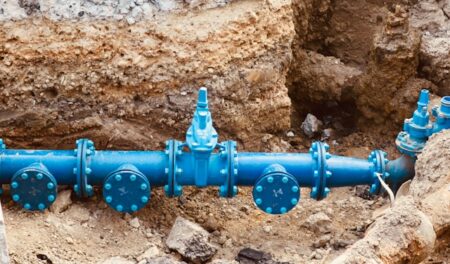Laser cleaning is a process used to remove contaminants, coatings, rust, and other unwanted substances from a variety of surfaces. It works by using high-intensity laser light to ablate (remove) the unwanted material, leaving the underlying surface clean and undamaged.
Here’s how laser cleaning works:
- Laser Source: Laser cleaning machines use a high-powered laser source, typically a pulsed or continuous-wave (CW) laser. The choice of laser type depends on the specific application and the material to be removed.
- Absorption of Laser Energy: The laser emits a focused beam of light with a specific wavelength that is absorbed by the contaminants or coatings on the surface. Different materials absorb different wavelengths of laser light. The energy from the laser is converted into heat energy when it interacts with the contaminant.
- Thermal Ablation: The absorbed laser energy rapidly heats the contaminants or coatings, causing them to vaporize or sublimate (transition directly from a solid to a gas) without heating the substrate material underneath. This process is called thermal ablation. The contaminants are broken down into smaller particles, which are then either blown away by a stream of gas or collected using a vacuum system.
- Control and Precision: Laser cleaning systems can be precisely controlled to ensure that only the contaminants are removed, leaving the substrate material intact. This level of control allows for the restoration of delicate or valuable surfaces without causing damage.
- Safety Measures: Safety precautions are essential when using laser cleaning systems. Operators wear appropriate protective gear, and safety interlocks are in place to prevent accidental exposure to the laser beam.
- Environmental Considerations: The process is relatively clean and environmentally friendly because it doesn’t involve the use of chemicals or abrasive materials, which can produce waste and pollutants. However, proper disposal of the removed contaminants is still necessary, depending on their nature.
- Applications: Laser cleaning is used in a wide range of applications, including rust removal from metal surfaces, paint stripping, graffiti removal, and cleaning historical artifacts, statues, and artwork without damaging the original material. It’s also used in industrial settings to prepare surfaces for bonding or coating processes.
Advantages of laser cleaning include its precision, minimal waste generation, reduced environmental impact, and the ability to clean without chemicals or abrasive methods. However, it may not be suitable for all materials and contaminants, and the choice of laser parameters (wavelength, power, pulse duration) should be carefully tailored to each specific application to achieve the best results.
What are the advantages of laser cleaning over sandblasting?
Laser cleaning offers several advantages over sandblasting as a surface preparation and cleaning method.
Here are some key advantages of laser cleaning over sandblasting:
- Precision: Laser cleaning provides a high degree of precision and control. Operators can accurately target and remove contaminants or coatings without damaging the underlying substrate. In contrast, sandblasting can be more aggressive and may result in unintentional substrate damage, especially on delicate or valuable surfaces.
- Non-Abrasive: Is a non-abrasive process. It doesn’t rely on physical abrasion, which can cause surface wear or material loss, as sandblasting does. This makes laser cleaning suitable for cleaning sensitive materials or surfaces where preserving the integrity of the substrate is essential.
- Environmental Friendliness: Is an environmentally friendly method. It doesn’t involve the use of abrasive materials or chemicals, which can produce waste and potentially harm the environment. Sandblasting, on the other hand, may generate dust and waste materials that need to be managed and disposed of properly.
- Reduced Waste: Generates minimal waste because the removed contaminants are typically converted into gas or fine particulates, which can be collected using a vacuum system. Sandblasting, in contrast, generates substantial waste in the form of abrasive media and removed coatings, which can be challenging to handle and dispose of.
- No Consumables: Laser cleaning does not require consumables like abrasive media, which need to be continually replaced in sandblasting operations. This can result in cost savings over time and reduced downtime for media replenishment.
- Less Operator Fatigue: Operating sandblasting equipment can be physically demanding, and operators may experience fatigue from handling abrasive media and the associated equipment. Laser cleaning is generally less physically demanding, which can contribute to operator comfort and safety.
- Containment and Safety: Sandblasting operations often require containment structures to capture and control the abrasive media and contaminants generated during the process. This can be logistically challenging and costly. Laser cleaning generates fewer contaminants and is easier to control in terms of containment.
- Reduced Risk of Damage to Adjacent Areas: Sandblasting can create a risk of unintentional damage to adjacent structures or surfaces due to the scattering of abrasive media. Laser cleaning minimizes this risk because it’s a more controlled and focused process.
- Versatility: Is versatile and can be used on a wide range of materials, including metals, ceramics, stone, concrete, and some plastics. Sandblasting can be limited in terms of the materials it can effectively clean without causing damage.
While laser cleaning has numerous advantages, it’s important to note that it may not be suitable for all applications or materials. The choice between laser cleaning and sandblasting depends on the specific cleaning requirements, the type of surface, and the cost-effectiveness of each method for a particular project.








